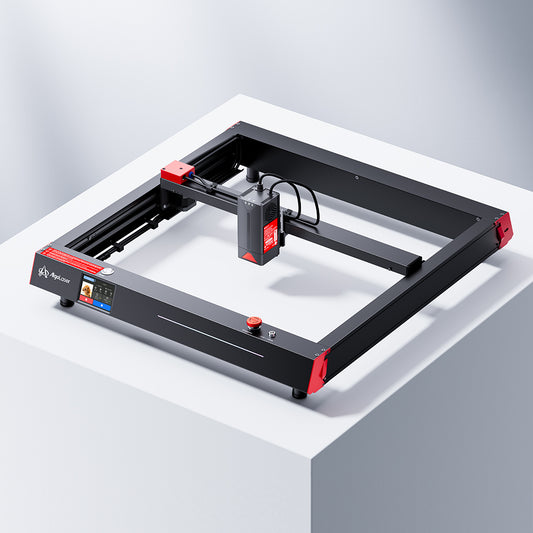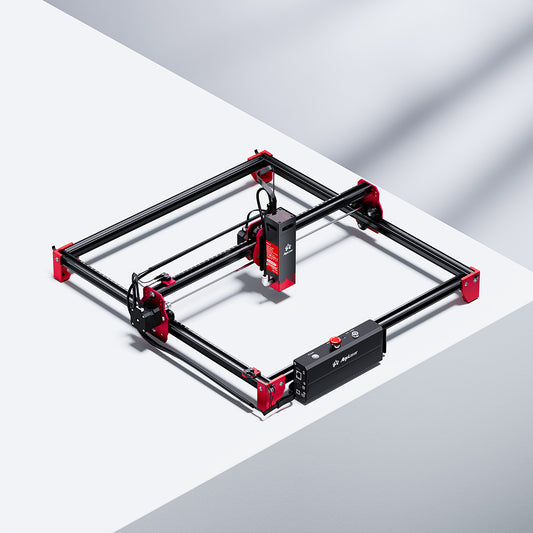13 Best Wood Carving and Cutting Tools for Crafts
Wood crafting, a timeless art form, demands a mastery of tools that can shape, carve, and bring imagination to life. In this exhaustive guide, we'll explore an array of hand tools, power tools, and even delve into the precision of wood laser engravers. Each section unveils the nuances of these tools, highlighting their unique features and applications. Whether you're a seasoned artisan or a novice in the world of woodworking, We will equip you with the knowledge to choose the best wood carving and cutting tools for your craft.
Event Dates: December 5 – January 3
Event Page: 2025 Laser Engraver Christmas Sale
👉 Visit 2025 Laser Engraver Christmas Sale and craft your perfect engraving setup today!
✅ Alpha MK2 40W
🎄 AlgoLaser Christmas Deals – Extra 12% Off!
Christmas Activities (December 5 – January 3)
Christmas Price: $899
Use XMAS12 → Final Price: $791
💰 You Save: $108
🚚 Fast Global Delivery (US/EU/MX/BR) – Free 3–7 Day Shipping
🔗 https://algolaser.com/products/algolaser-alpha-mk2-40w-diode-laser-cutter-and-engraver
✅ Alpha MK2 20W
🎄 Alpha MK2 20W Exclusive Christmas Deal!
Christmas Activities (December 5 – January 3)
Use XMASAK20 → $80 OFF
➡️ Final Price: $499 (Original: $579)
🚚 Fast Global Delivery (US/EU/MX/BR) – Free 3–7 Day Shipping
🔗 https://algolaser.com/products/algolaser-alpha-mk2-diode-laser-engraver-algolaser
⚠️ Note: Discount codes cannot be combined with minimum spend offers (such as “Spend $300, Get $30 Off”). Please select the promotion that gives you the best overall value.
Hand Tools for Wood Cutting
Hand tools are the bedrock of woodworking, embodying the artisan's skill and precision.
Hand Saws
From the versatile crosscut saw to the finely toothed dovetail saw, hand saws offer unparalleled control. The coping saw excels in intricate curves, while a bow saw tackles larger cuts. Each type caters to specific woodworking needs, showcasing the artistry achievable with hand tools.
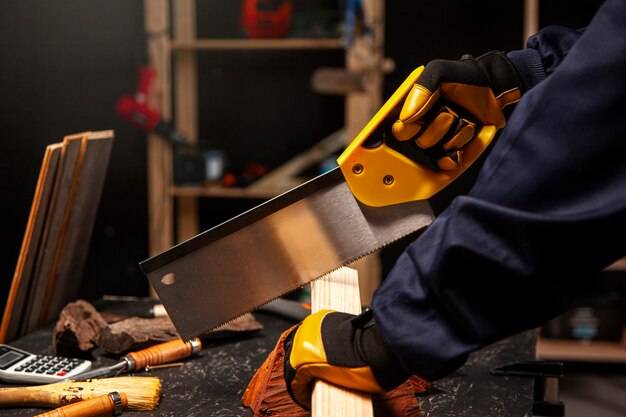
image credit: - Freepik
Chisels
The chisel, a quintessential wood cutting tool, comes in various shapes and sizes. Beveled edge chisels excel at precision work, mortise chisels tackle heavy-duty tasks, and fishtail chisels navigate tight corners. The artisan's finesse lies in selecting the right chisel for the job.
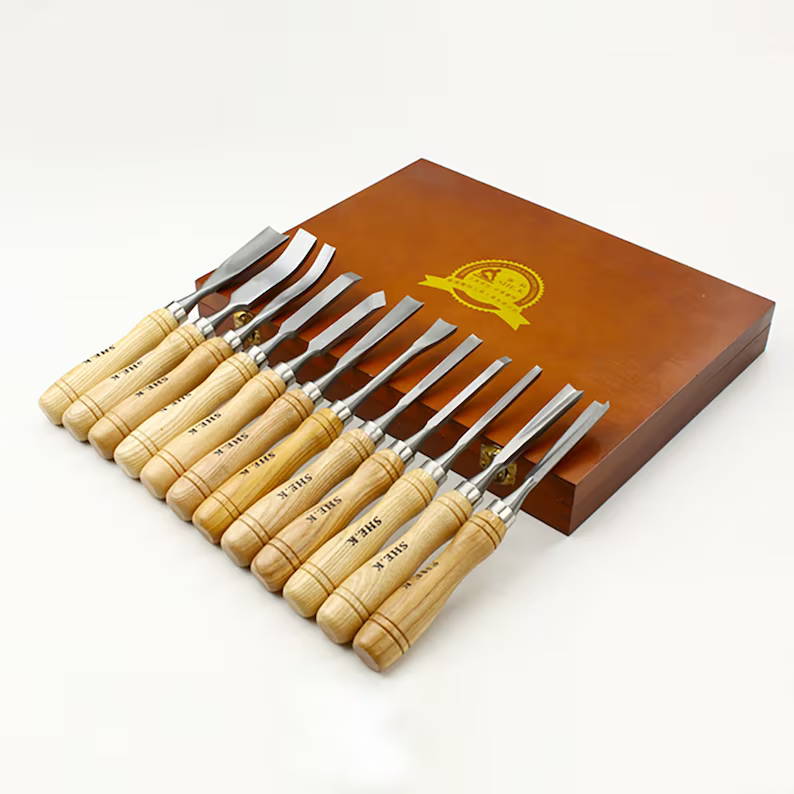
image credit: LeatherVine - Etsy
Axes
Traditionally associated with shaping logs, axes have evolved to become precise carving tools. The broad axe excels in shaping large surfaces, while the carving axe, with its narrow profile, hones in on detailed work. Mastery of an axe requires not just strength but finesse in controlling cuts.
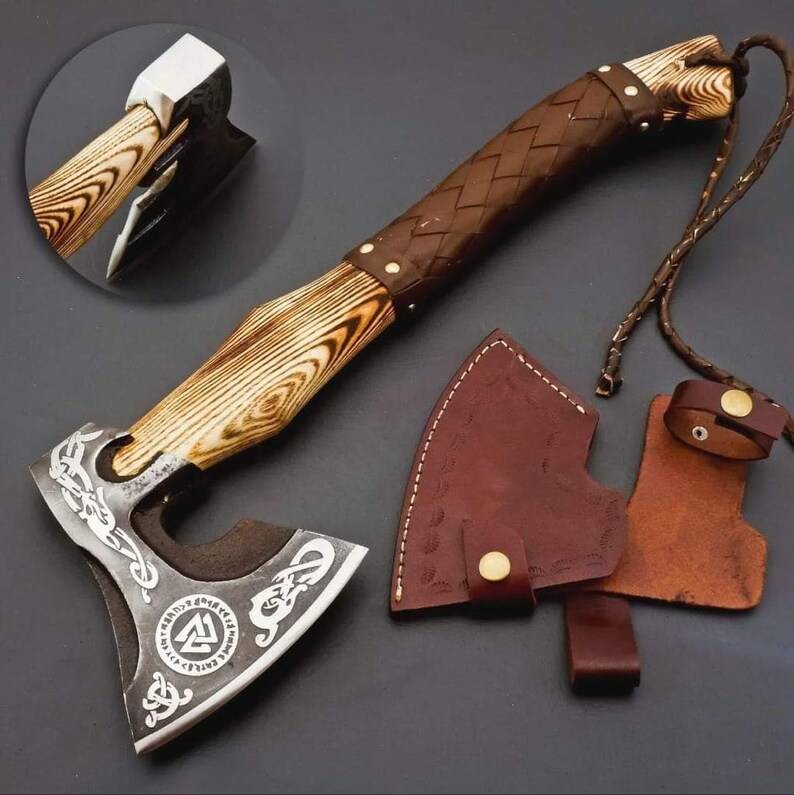
image credit: meharblades - Etsy
Hand Planes
Hand planes are indispensable for achieving smooth, flat surfaces. From the jack plane's initial rough shaping to the smoothing plane's final touch, these tools create a surface that invites the caress of a hand. Understanding the intricacies of setting up and using planes is key to achieving the desired finish.
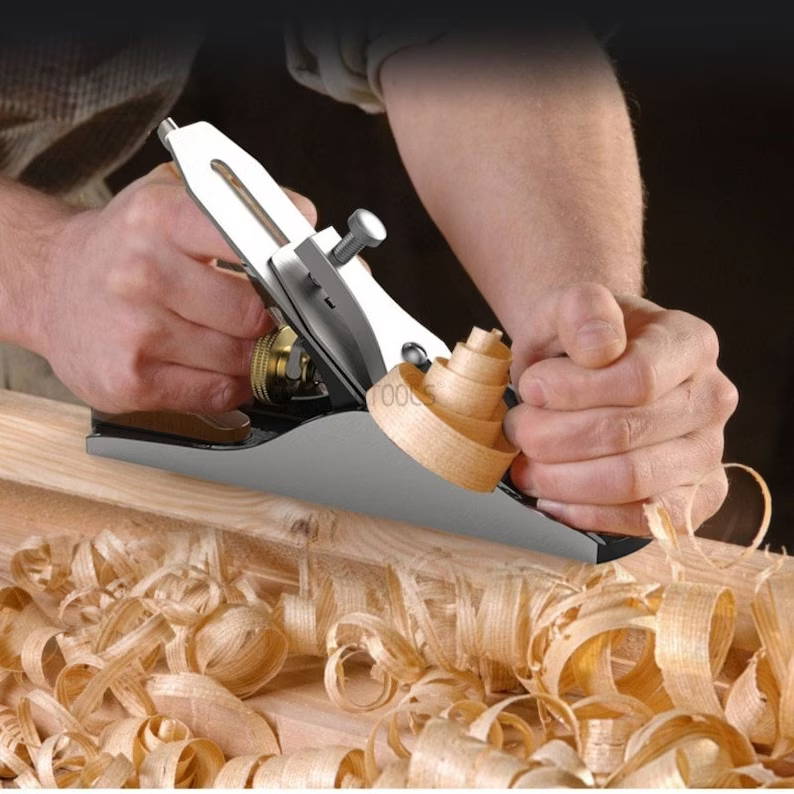
image credit: TopCraftGoods - Etsy
Adze
The adze, a tool with a curved blade, carves recesses and contours. This ancient tool finds its place in shaping concave surfaces, making it a favorite among those crafting wooden bowls and intricate sculptures. The technique lies in harnessing the adze's curve for controlled carving.
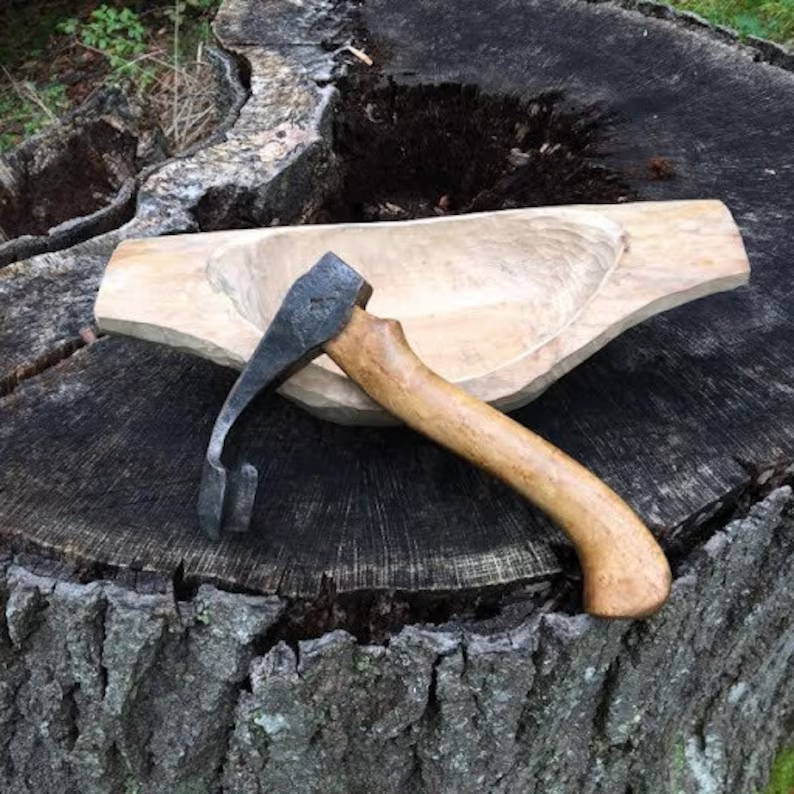
image credit: downingarts - Etsy
Spokeshave
A spokeshave is a versatile tool for shaping curved surfaces. With its adjustable blade, it can create smooth contours or remove controlled amounts of material. Whether crafting chair legs or intricate wooden handles, the spokeshave's adaptability makes it a must-have for woodworkers.
Each of these hand tools is a testament to the artisan's connection with their craft. The tactile feedback and precision they offer contribute to the unique character of handcrafted wooden pieces.

image credit: Vonkenstaal - Etsy
Tools for Cutting Wood with Power
Power tools have revolutionized woodworking, amplifying efficiency and expanding creative possibilities.
Power Saws
From circular saws to jigsaws, power saws come in various forms, each tailored to specific cutting needs. Circular saws excel at straight cuts, while jigsaws maneuver through curves with ease. The miter saw ensures precision in angled cuts, making it a go-to tool for framing and molding.

image credit: gpointstudio - Freepik
Router
The router, a versatile tool, adds intricate details to wood surfaces. With a variety of bits, it can create decorative edges, intricate joinery, and even carve complex designs. Whether handheld or mounted on a table, the router is a powerhouse for enhancing the aesthetic appeal of wooden projects.

image credit: Freepik
Chainsaw
Embodying raw power, the chainsaw is the tool of choice for heavy-duty cutting. From felling trees to sculpting large wooden sculptures, the chainsaw's efficiency in removing substantial amounts of material is unmatched. Safety and precision are paramount when wielding this powerful tool.
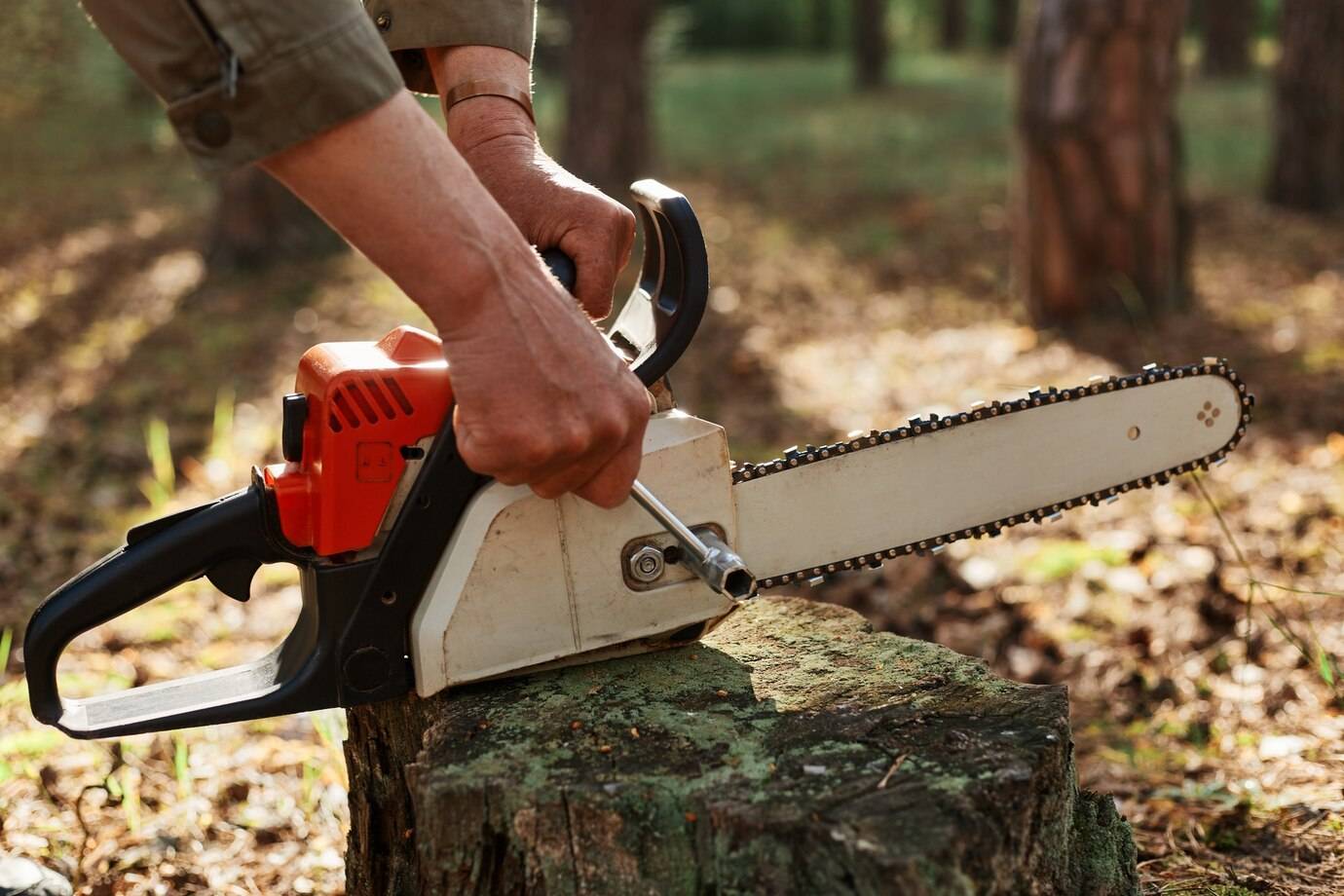
image credit: user18526052 - Freepik
Power Planes
Power planes, with their electric or battery-driven motors, streamline the process of removing material and shaping surfaces. The electric hand plane is ideal for smoothing and leveling, while the thickness planer ensures uniform thickness across large wooden boards. These tools bring efficiency to tasks that would be labor-intensive with hand tools alone.
Power tools offer speed and accuracy, allowing woodworkers to tackle large-scale projects and intricate details with equal finesse. The key lies in selecting the right tool for the specific task at hand and mastering the techniques to harness their full potential.
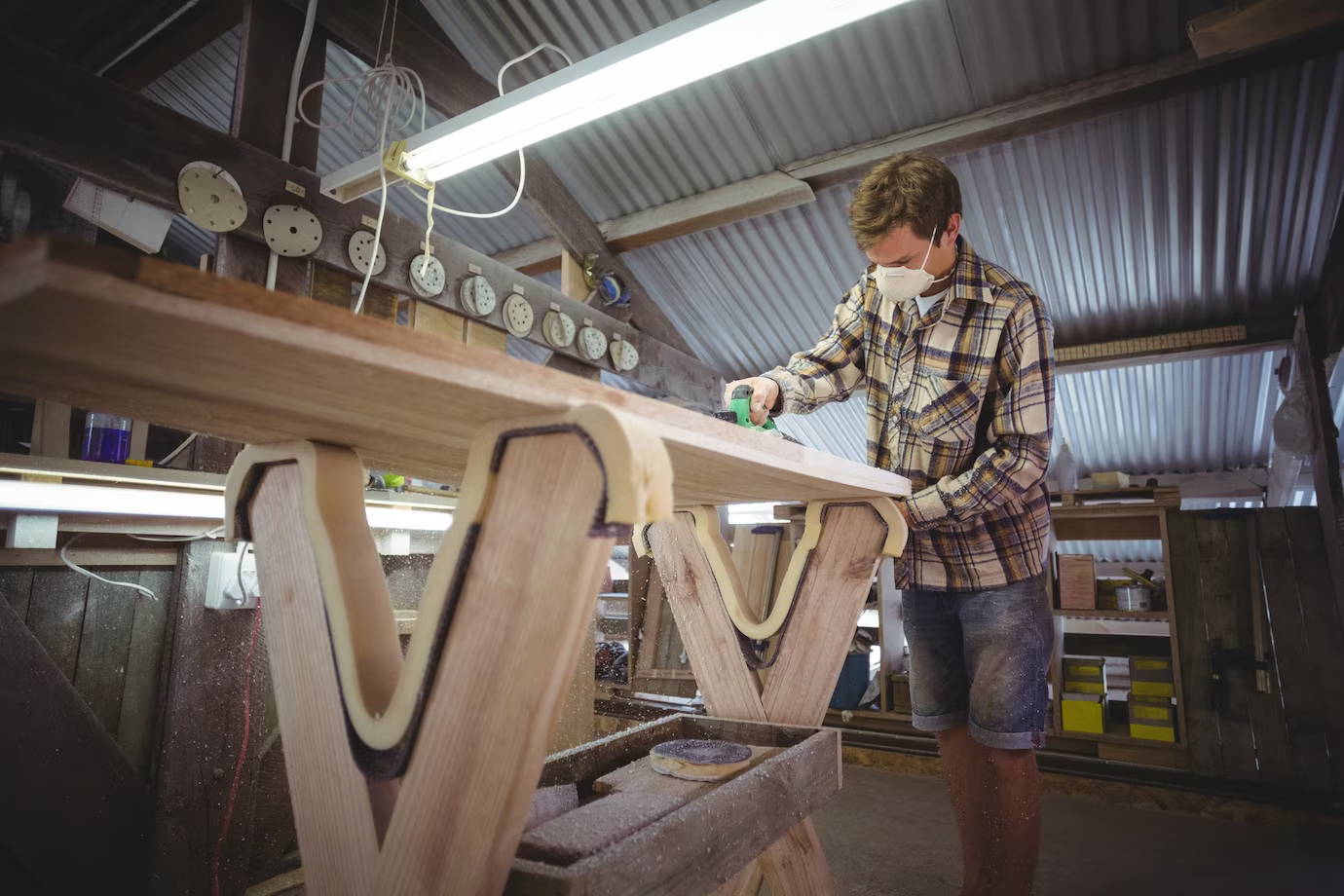
image credit: wavebreakmedia_micro - Freepik
Precise Wood Cutting Tools: Wood Laser Engraver
Precision in woodworking reaches new heights with a wood laser engraver. These tools, driven by cutting-edge technology, bring digital precision to the age-old craft.
Algolaser Alpha
The Algolaser Alpha stands as a powerhouse in laser engraving technology. With its high precision and versatility, it can tackle intricate designs on various wood surfaces. The ability to control depth and intensity makes it suitable for both shallow engravings and deep cuts, expanding the range of creative possibilities.
Algolaser Delta
The Algolaser Delta is designed for those seeking precision in large-scale projects. Its robust features make it suitable for engraving intricate patterns on sizable wooden surfaces. The Delta's efficiency lies in its ability to maintain consistent precision across expansive areas, making it a go-to tool for intricate panel engravings.
Algolaser DIY Kit
The Algolaser DIY Kit caters to the DIY enthusiast, providing an accessible entry point into the world of laser engraving. With its user-friendly design, this kit allows hobbyists to bring their creative visions to life on wooden surfaces. From personalized signage to intricate patterns, the Algolaser DIY Kit empowers users to explore the art of laser engraving at their own pace.
Laser engraver for wood, with their precision and versatility, bridge the gap between traditional craftsmanship and modern technology. These tools allow artisans to replicate intricate designs with unmatched accuracy, opening avenues for customization and personalization in wood crafting.

The Best Wood Carving and Cutting Tools: Criteria for Selection
Selecting the best wood carving and cutting tools requires a nuanced understanding of the craft, materials, and individual preferences.
Material Compatibility
Different woods have varying hardness levels and grain patterns, influencing the choice of tools. Hardwoods may require more robust tools, while softer woods may be more responsive to delicate instruments. Understanding the characteristics of the chosen wood is paramount in selecting the appropriate tools.

Project Scale
The scale of the project influences the choice between hand tools and power tools. For intricate details and smaller projects, hand tools offer precision and control. Larger projects may benefit from the efficiency and speed provided by power tools. Consider the scope of the project to determine the right balance between manual finesse and powered productivity.
Project Complexity
Intricate designs and complex detailing demand specific tools that can navigate curves, contours, and fine lines. Chisels, hand saws, and spokeshaves excel in detailed work, while power routers and laser engravers are invaluable for intricate patterns and precise detailing.
Skill Level
The craftsman's skill level plays a crucial role in tool selection. Novices might find hand tools more approachable, allowing them to develop a tactile understanding of the wood. As proficiency grows, power tools and laser engraving machine can be introduced to tackle more complex tasks. The learning curve and comfort level with each tool should be considered.
Budget
The cost of tools can vary significantly. While hand tools are generally more affordable, high-quality power tools and laser engravers can be significant investments. Consider the budget constraints without compromising on the quality and functionality required for the intended projects.
Tool Maintenance
Regular maintenance ensures the longevity and efficiency of wood carving and cutting tools. Hand tools often require sharpening, while power tools might need blade replacements or adjustments. Laser engravers necessitate periodic checks on the alignment and cleanliness of the laser system. Understanding and committing to proper tool maintenance is crucial for sustained performance.
Ergonomics
Comfort and ergonomics are often overlooked but crucial aspects of tool selection. Tools that feel comfortable in the hand reduce fatigue and enhance control. Power tools with adjustable handles and laser engravers with user-friendly interfaces contribute to a more enjoyable and productive woodworking experience.
Versatility
The best tools for wood carving and cutting are often versatile, able to adapt to various projects and materials. Consider tools that offer multiple functions or attachments, allowing them to tackle a range of tasks without the need for constant tool changes.
Reviews and Recommendations
Tap into the experiences of other woodworkers by exploring reviews and seeking recommendations. Online forums, woodworking communities, and reviews on manufacturer websites can provide valuable insights into the real-world performance of specific tools. Consider the feedback from craftsmen who have used the tools in similar contexts.
By carefully considering these criteria, woodworkers can make informed decisions about the tools that best align with their needs, preferences, and the demands of their projects.

Wood Cutting Tool Maintenance and Safety Tips
Maintaining wood cutting tools ensures longevity, consistent performance, and most importantly, safety.
Regular Inspection
Periodically inspect all tools for signs of wear, damage, or misalignment. Loose handles, dull blades, or malfunctioning components should be addressed promptly. A proactive approach to maintenance can prevent accidents and ensure tools are in optimal working condition.
Sharpening and Honing
Keep hand tools sharp by regularly sharpening blades. Chisels, planes, and saws benefit from sharp edges that enhance precision and reduce the effort required. Invest in quality sharpening stones or systems to maintain the keen edge of cutting tools.
Cleaning
Remove wood residues and debris from tools after each use. Buildup can affect performance and compromise the accuracy of cuts. Power tools, including routers and laser engravers, should be cleaned according to the manufacturer's guidelines to prevent dust accumulation.
Lubrication
Apply appropriate lubricants to moving parts and joints, especially in hand tools. Lubrication ensures smooth operation and prevents premature wear. Power tools may require oiling or greasing as specified in the user manual.
Blade Replacements
Stay vigilant about the condition of blades, whether on hand tools, power saws, or laser engravers. Replace blades that show signs of dullness, chipping, or deformation. Sharp blades not only enhance performance but also contribute to safer woodworking.
Proper Storage
Store tools in a clean, dry environment to prevent rust and corrosion. Hand tools benefit from hanging or using tool racks to maintain organization and accessibility. Power tools and laser engravers should be stored in protective cases or designated areas to avoid exposure to dust and moisture.
Safety Gear
Always wear appropriate safety gear when working with wood cutting tools. Safety glasses, hearing protection, dust masks, and gloves are essential for protecting eyes, ears, respiratory system, and hands. Laser engraving, in particular, requires eye protection designed for laser use.
Follow Manufacturer Guidelines
Adhere to the manufacturer's guidelines and recommendations for tool usage, maintenance, and safety. Consult user manuals for specific care instructions and adhere to suggested operating parameters. Manufacturers provide valuable information to ensure the longevity and safety of their products.
Training and Education
Invest time in learning proper techniques and safety practices. Many accidents occur due to improper tool usage or lack of understanding. Attend workshops, take online courses, or seek guidance from experienced woodworkers to enhance skills and knowledge.
Tool Inspection Before Use
Before starting any woodworking session, inspect tools thoroughly. Confirm that blades are secure, power cords are intact, and all safety features are functional. This pre-use inspection is a crucial step in preventing accidents and ensuring a smooth working experience.
By incorporating these maintenance and safety tips into the woodworking routine, artisans can create a safer and more efficient environment, prolong the life of their tools, and enjoy a more rewarding woodworking experience.
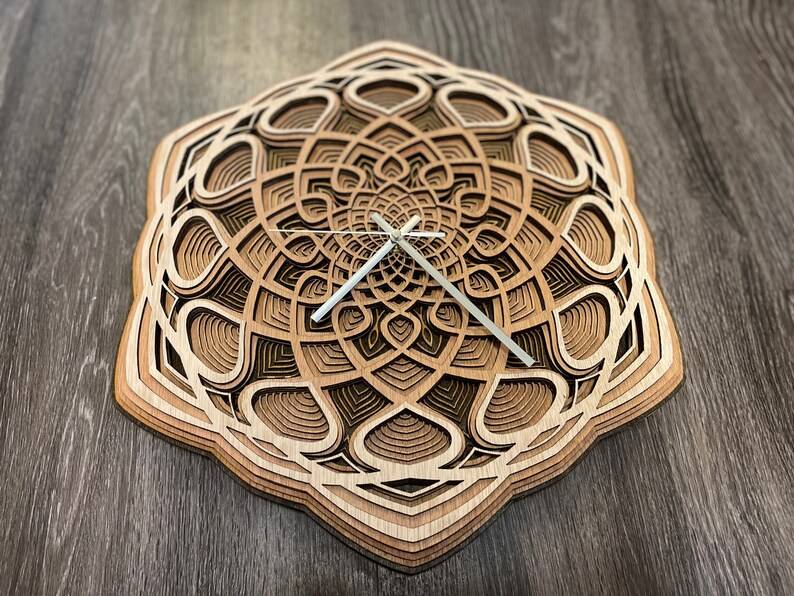
image credit: NotOfThisWorldLights - Etsy
Conclusion: The Best Wood Cutting Tools
The art of wood carving and cutting transcends generations, and the tools employed in this craft serve as extensions of the artisan's creativity and skill. From the traditional finesse of hand tools to the efficiency of power tools and the precision of laser engravers, woodworkers have a vast array of tools at their disposal.
The hand tools, including hand saws, chisels, axes, planes, adze, and spokeshave, connect the craftsman with the timeless traditions of woodworking. Each tool bears the marks of skilled hands, shaping wood with a level of precision that reflects years of mastery. Hand tools embody the essence of craftsmanship, demanding a tactile understanding of the material and an intimate connection between the tool and the artisan.
Power tools have ushered in a new era of woodworking, offering efficiency and versatility. Circular saws, routers, chainsaws, and power planes expedite tasks, allowing craftsmen to tackle larger projects with speed and accuracy. These tools cater to the demands of modern woodworking, where time is often a critical factor, and intricate details need to be replicated on a larger scale.
Wood laser engravers represent the pinnacle of precision and customization in wood crafting. Algolaser Alpha, Algolaser Delta, and Algolaser DIY Kit showcase the marriage of technology and tradition. Laser engravers allow artisans to bring intricate digital designs to life on wooden surfaces, adding a layer of personalization and detail that is unparalleled. These tools bridge the gap between woodworking and digital innovation, offering limitless creative possibilities.
Free SVG & Gcode Files for Laser Engraving & Cutting can be found here, wich you can import into our laser cutters directly.


